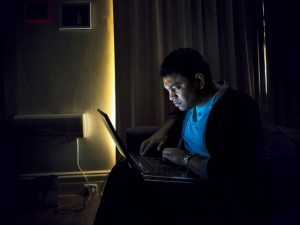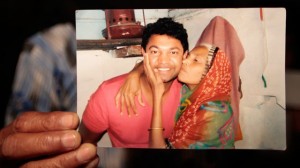Saroo Munshi Khan didn’t know what to expect on that station platform when his brother left him for what would have been a few minutes. Tired and impatient when his elder brother, Guddu, didn’t return, Saroo noticed a vacant train carriage and decided to take a nap inside it. Unfortunately, he made the mistake of boarding an empty train that took him all the way to Calcutta, 1500 miles away from his home in Khandwa, India. Scared and alone, Saroo narrowly avoided starving by scavenging for food, as well as dodging other dangers such as railway worker who attempted to kidnap him for malicious purposes. By and by, Saroo was found by a teenager who reported him to child services. The lost boy was taken to a government center for abandoned children before being transferred to the Indian Society for Sponsorship and Adoption.
Unable to fully describe his original whereabouts Saroo was officially declared a lost child and subsequently adopted by an Australian couple, the Brierleys. This was 25 years ago.
Fast-forward to 2011, after years of growing up in Hobart, Tasmania, Saroo spent a multitude of time searching for his roots through the Internet, inspired by his adoptive mother’s decision to pin a map of India in his room.
 His search was conducted mainly via Google Earth’s satellite imagery. On a late night in 2011, he discovered a railway station that matched his childhood recollection of the one where he fell asleep in the empty carriage. Shock came to Saroo when he realized that the name of the station, Burhanpur, matched the same phonetic spelling from his childhood. The hunt had intensified. Following the train tracks north from Burhanpur Station, Saroo discovered imagery of Khandwa. The name escaped his memory, yet the nostalgia of playing at the fountain by the town’s station came back to him.
His search was conducted mainly via Google Earth’s satellite imagery. On a late night in 2011, he discovered a railway station that matched his childhood recollection of the one where he fell asleep in the empty carriage. Shock came to Saroo when he realized that the name of the station, Burhanpur, matched the same phonetic spelling from his childhood. The hunt had intensified. Following the train tracks north from Burhanpur Station, Saroo discovered imagery of Khandwa. The name escaped his memory, yet the nostalgia of playing at the fountain by the town’s station came back to him.
Facebook also played a role in his search when a group page linked to Khandwa helped strengthen his intuition that the town is indeed his birthplace. Conclusively, Saroo travelled to Khandwa and found his family after asking the locals if any of their neighbors had been missing a child for 25 years. Saroo was reunited with his mother, his sister Shekila, and his brother Kallu. Tragically, Guddu, the older brother, had been killed accidentally when a train struck him on the year that Saroo went missing.
According to Saroo the experience was similar to “finding a needle in a haystack”, and equivalent to being like “Superman…” and adding “You are able to go over and take a photo mentally and ask, ‘Does this match?’ And when you say, ‘No,’ you keep on going and going and going.”
Saroo still lives in Hobart and keeps in touch with his real family. He plans to help his mother by buying her a house. In 2012, he had documented his experience in the book A Long Way Home.



